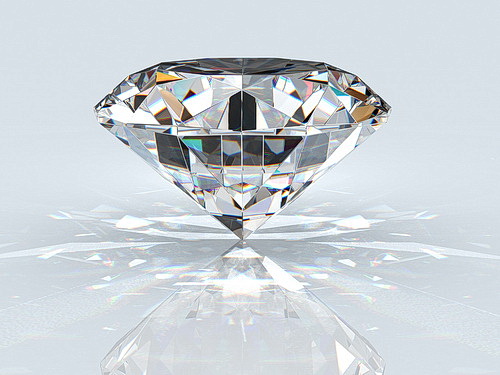For decades, diamonds have been marketed as rare, precious stones that symbolize wealth, luxury, and eternal love. However, the idea that mined diamonds are rare is a carefully cultivated myth. In reality, mined diamonds are not rare in nature, and their perceived scarcity is largely a result of industry manipulation. In this article, we will explore why mined diamonds are not rare, how this misconception came about, and what it means for consumers today.
The Myth of Diamond Scarcity
The belief that mined diamonds are rare stems from clever marketing campaigns that have been perpetuated by the diamond industry for over a century. One of the most influential players in this narrative is De Beers, the global diamond company that controlled the majority of the diamond supply for most of the 20th century. To create the illusion of scarcity, De Beers restricted the flow of diamonds into the market, leading consumers to believe that mined diamonds are rare and, therefore, more valuable. In reality, mined diamonds are not rare, and their availability has been tightly controlled to drive up prices.
Diamonds Are Abundant in Nature
Contrary to popular belief, mined diamonds are not rare in the Earth’s crust. While it’s true that diamonds take millions of years to form, they are found in abundance across several regions of the world. Major diamond-producing countries like Russia, Botswana, and Canada produce millions of carats of diamonds each year. These natural deposits indicate that mined diamonds are not rare in terms of geological occurrence. The sheer volume of diamonds mined annually shows that there is no true shortage of these gems.
Why Prices Remain High
If mined diamonds are not rare, you may wonder why their prices remain so high. The answer lies in the controlled release of diamonds into the market. By limiting the supply of diamonds, companies can maintain high prices despite the fact that mined diamonds are not rare. This strategy, combined with marketing campaigns that promote diamonds as a symbol of love and exclusivity, has successfully maintained the perception that diamonds are precious and worth their high price tag. Consumers are often unaware that mined diamonds are not rare and that their prices are artificially inflated.
The Rise of Lab-Grown Diamonds
As more people become aware that mined diamonds are not rare, the demand for alternatives like lab-grown diamonds has grown significantly. Lab-grown diamonds are chemically and physically identical to lab diamonds but come without the environmental damage or ethical concerns associated with traditional mining. Since mined diamonds are not rare, many consumers are turning to lab-grown options, which are typically more affordable and sustainable. The rise of lab-grown diamonds highlights the growing recognition that mined diamonds are not rare and that there are better, more ethical options available.
Environmental and Ethical Concerns
The fact that mined diamonds are not rare also raises important ethical and environmental questions. Diamond mining has been linked to severe environmental degradation, including deforestation, water pollution, and habitat destruction. Additionally, the human cost of diamond mining is well-documented, with workers in some regions facing dangerous working conditions and exploitative labor practices. If mined diamonds are not rare, the justification for these harmful practices becomes even weaker. Consumers are increasingly questioning the need for traditional diamond mining when mined diamonds are not rare and lab-grown alternatives are readily available.
Marketing and the Power of Perception
The belief that mined diamonds are rare is a testament to the power of marketing. By controlling the narrative, diamond companies have successfully convinced generations of consumers that diamonds are a rare and precious commodity. Even though mined diamonds are not rare, the emotional and symbolic value attached to them has kept demand high. Understanding that mined diamonds are not rare can help consumers make more informed decisions when purchasing jewelry, allowing them to prioritize ethical and sustainable choices over outdated marketing myths.
Alternatives to Mined Diamonds
For those seeking a diamond but concerned about the environmental and ethical issues surrounding traditional mining, lab-grown diamonds and other alternatives provide a compelling option. Since mined diamonds are not rare, there’s little reason to continue supporting practices that harm the planet and exploit workers. Lab-grown diamonds, moissanite, and other gemstone alternatives offer the same beauty and durability without the inflated prices or negative impacts associated with mined diamonds. Recognizing that mined diamonds are not rare allows consumers to explore these options with confidence.
What This Means for the Jewelry Industry
As awareness grows that mined diamonds are not rare, the jewelry industry is starting to shift. More retailers are offering lab-grown diamonds and sustainable gemstones to meet the demand of conscientious consumers. This trend reflects a broader move toward transparency and ethical sourcing in the luxury goods market. Since mined diamonds are not rare, the industry can no longer rely on the illusion of scarcity to justify high prices. Instead, a focus on craftsmanship, ethical sourcing, and sustainability is becoming the new standard.
Conclusion
In conclusion, the notion that mined diamonds are rare is a myth that has been perpetuated by decades of marketing and industry control. The truth is that mined diamonds are not rare, and their high prices are the result of deliberate supply manipulation. As consumers become more aware of the reality behind the diamond industry, many are turning to lab-grown diamonds and other ethical alternatives. Understanding that mined diamonds are not rare empowers buyers to make more informed, responsible choices, ensuring that the sparkle they choose reflects their values as well as their style.

